Like many anglers, my first exposure to Bob White’s art was through John Gierach’s writing. Then, after years of staring at Bob’s paintings, I finally worked up the courage to ask him for an interview for a story I was writing about art and fly fishing.
Bob graciously agreed — which won’t come as a surprise to anyone who knows him — and we struck up a quick friendship. Since then, I’ve had the chance to fish with Bob here on some of my home water in Utah. Through it all, Bob hasn’t let any of my questions about art or fishing go unanswered. He’s one of those rare individuals that squeezes the most out of the time he so generously gives to others.
As I read through Bob’s new book, The Classic Sporting Art of Bob White, it occurred to me that reading the book was an awful lot like sitting down and having a chat with Bob over breakfast at a fishing lodge. If you don’t know Bob, you’ll feel like he’s an old friend after reading and visually feasting on Sporting Art.
At 280 full-color pages featuring 246 annotated images, in addition to short essays and reflections on life, fishing, hunting, and painting, Sporting Art has enough material to keep any sportsman or woman busy for a good long while. Of particular note are the sections where Bob walks the reader through how he composes a painting, and his painting process — with photos of each step. It’s a personal insight into a master’s work.
Sporting Art is divided into three main sections, with fly fishing leading off, followed by upland hunting, and closing with waterfowl. In each section are dozens of paintings with insightful annotations and anecdotes. Not surprisingly, John Gierach shows up frequently in the fly fishing section. As Bob says in the acknowledgements, “It’s a matter of fact that this book would not have come to fruition without the steady stream of encouragement and insistent support given to me by John.”
John and Bob’s works are interdependent at this point, and that’s a wonderful thing for us as consumers of their respective arts. While both are excellent in their own right, they’re at their best when working together, and that’s evident as you flip through page after page of fly fishing paintings and recognize old favorites that illustrated John’s columns in Fly Rod & Reel or Trout Magazine. While so many of us recall John’s stories associated with Bob’s paintings, it’s Bob’s annotations that really make this book sing. He gives us more context — and in some cases, more information — about a story we previously thought we knew well. Often, Bob discusses why he chose to paint a particular scene, or why he used watercolor instead of oil, and he does so in a way that’s approachable. It’s very blue-collar — an attitude that shines through in his art, and part of what’s made his work so appealing for so long.
And, I’d be remiss if I didn’t remark on the absolutely wonderful imagery Bob conveys through his writing. Bob worked as a guide in Alaska for years, and it’s the southwestern part of The Last Frontier that inspires so much of his work. Through annotations, essays, and short reflections, Bob takes readers with him as he leaves a master’s program in the Midwest for a fishing lodge in the Great White North. Throughout it all, there’s never a doubt that Bob truly loves fly fishing — the fish, the people, the places, and the experiences. Often, guides who’ve been in the business as long as Bob was burn out, becoming blind to what is, for most of us, a once-in-a-lifetime trip, so that the magic just isn’t there. But that’s not true for Bob. Each painting of Alaska, or of any fish or landscape, conveys the same reverence and awe for the natural world that got most of us into fly fishing in the first place.

The same goes for his upland game and waterfowl sections of the book, though I can’t speak as strongly to those subjects, as I’m terrible at hunting chukar, rabbit, and ducks. But I can say the paintings featured in those sections are just as visceral as ones featuring fish and flies.
In all, I think Bob himself summed up his book best. In one of the essays included, he wrote that, “Some days were better than others, and it’s easy to forget those windy days when my fishermen acted as sails and I struggled on the oars, fighting desperately to push the boat downriver against the gusts. The way I’ll always remember it, the days were calm, the water was flat, and evening’s long shadows shaded and cooled the deep pools below the cliffs.”
That’s what Bob’s artwork does — it takes you back to the best moments of fishing, even if you’re staring at a painting of a stream in the Driftless and you’ve never set foot there in your life. It’s the attitude of the painting that strikes a chord so deeply with anglers, and it’s Bob’s ability to communicate with his paintbrush that has kept him a household name in the angling community. I have prints of five of his paintings hanging in my writing office here at home. When I’m stuck pounding away at an article on deadline — instead of out fishing — a glance at Bob’s paintings reminds me how grateful I am for each day I get on the water.
The Classic Sporting Art of Bob White is available online at all major booksellers, with a foreword by Tom Rosenbauer, and introductions by John Gierach and Donnall Thomas. Signed copies are available on Bob’s website.




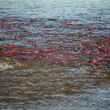
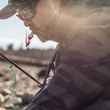

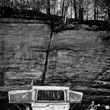
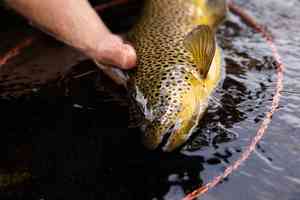


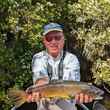
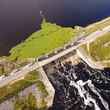

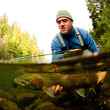
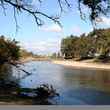



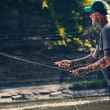




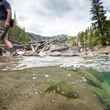

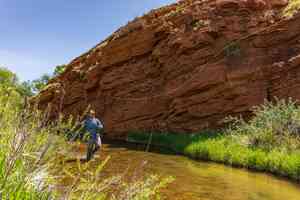
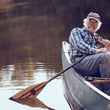


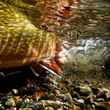
Comments